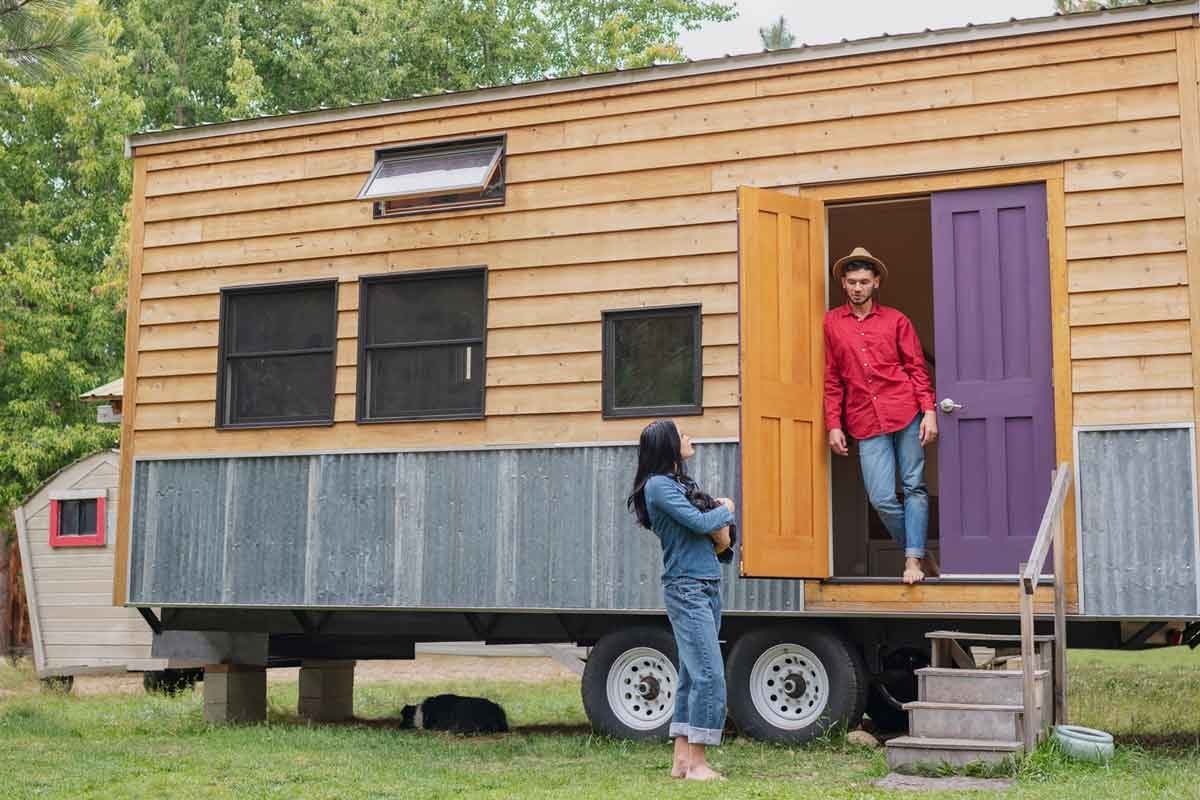For many, tiny house living is a simple, appealing option in a complicated world. If you're thinking of extreme downsizing, read our tiny house guide.

The Big Guide to Tiny House Living

Tiny houses have been around awhile, most famously Henry David Thoreau’s self-built 150-sq.-ft. cabin that inspired his ode to simple living, Walden. Today’s tiny house movement, which kicked off in earnest in the late 1990s, boasts an estimated 10,000 tiny houses in the U.S. But is tiny house living right for you? Read on to find out.
On This Page
What Is a Tiny House?
The basic definition of a tiny house is a dwelling with 400 sq. ft. or less of floor space. That excludes loft or second stories, which can add additional living space without violating the “tiny” rule.
The extremely small dimensions of tiny houses require that residents make the most of every square inch of space with clever, space-saving solutions. Tiny house living appeals to those looking to downsize and simplify their lives, eliminate clutter, live more cheaply and help the environment.
Types of Tiny Houses
The two main types of tiny houses are:
- Houses built on a foundation, or permanently fixed dwellings;
- Houses built on trailers, like RVs or mobile homes, that can be moved from place to place.
Within those two categories there are countless tiny house variations. They may come as DIY kits with an interior you can customize. Or you can buy a tiny house blueprint and start from scratch, as a DIY project or working with a builder (like Tumbleweed Tiny Homes).
You can also buy a ready-made tiny house, like these high-end models from Wheelhaus, and have it delivered to your lot. Tiny houses can be made of recycled materials, shipping containers or old horse trailers.
Where Can You Live In a Tiny House?
While tiny houses might be on-trend, they’re not welcomed everywhere. Before you order your floor plans or have that tiny house delivered, make sure you find a location where it’s legal to park or build a tiny house — probably not in the middle of a gated community of sprawling ranch homes.
Rules vary from state to state and even county to county. The American Tiny House Association can provide guidance on zoning laws. Rural areas tend to be more tiny house friendly. And there are entire tiny house communities in locations around the country, which sell lots ready to welcome your tiny abode.
If you already own a piece of land with an existing home on it, or can arrange the long-term rental of a portion of someone else’s property, you can see about registering a mobile tiny house as an ADU (Accessory Dwelling Unit) — a second, stand-alone dwelling on the same lot as a larger home.
How Much Does a Tiny House Cost?
The average cost of a tiny house is $25,000 to $75,000, with a range of outliers on both ends of the price spectrum. You can acquire a bare-bones tiny house with a bathroom but no real kitchen for $6,800, or spend around $70,000 for a custom-made tiny house with a sleeping loft and plenty of other creature comforts.
Luxury tiny house builder Wheelhaus offers the Light-Haus model for a base price of $109,500. Or you can purchase the shell of a tiny house for around $20,000 to $40,000 (including trailer).
The initial costs seem low, but beware. Because of their small dimensions, tiny houses often require expensive custom-ordered appliances and bathroom fittings, as well as custom-made furnishings and storage accessories. That’s great if you have strong carpentry skills. But otherwise, it’s potentially pricey.
Building vs. Buying a Tiny House
Building a tiny house from scratch means you can design your (little) dream home and customize it to a tee. Buying an existing tiny house, and either moving to the house or moving the house to you, means you make your transition to a tiny house more quickly.
Either way, costs can add up when you factor in customization and utility hook-ups. There’s also a resale market for tiny houses, which can be nice, as these houses have been “road-tested” and may come with fewer hidden costs. See Tiny House Listings and Tiny Home Builders for current listings.
Helpful Features in Tiny Homes
There are three key features of tiny homes: storage, storage and more storage. Stairs that double as cabinets or drawers, backs of doors with space for dry foods, hanging racks for kitchen utensils, beds and couches with clothes and linen storage underneath — all are key tiny house storage hacks. When space allows, a loft sleeping area can be a huge boost to daytime living space. Speaking of helpful, check out these tiny house kits.
Preparing for the Tiny House Lifestyle
If you’ve tested out a tiny house via an Airbnb rental or similar and think you’re ready to take the plunge, consider the following:
- Have you researched zoning rules in your area, or are you ready to move to a tiny house community?
- Can you purge most of your belongings to downsize?
- If you’re a disorganized person, are you ready to embrace constant tidiness?
- If you’re living with a partner or spouse, can you tolerate each other in tiny living quarters?
- Are you okay with not having space to invite friends over, unless you entertain outside?
- Do you have kids or are you planning to start a family? Everyone is going to need sleeping and living space, and kids will want more privacy as they get older.




















